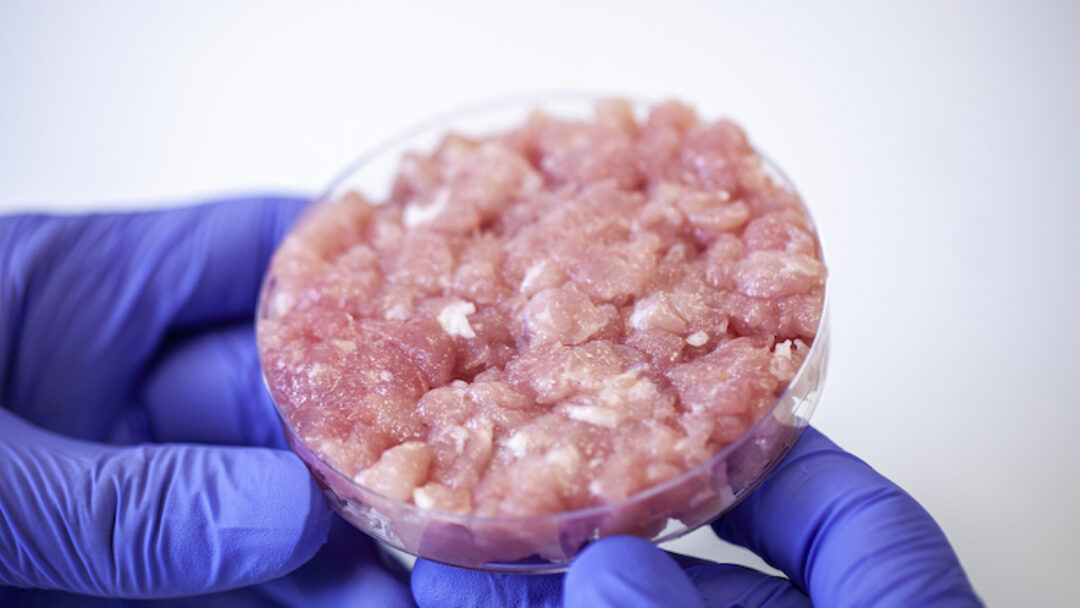The landscape of the food industry is constantly evolving, and one of the most recent advancements is the development of lab-grown meat. Also known as cultured meat or cell-based meat, this innovative technology aims to revolutionize the way we produce and consume meat.
Lab-grown meat is grown from animal cells, eliminating the need for traditional animal husbandry and slaughter. Last year, the USDA gave their approval for the sale of lab-grown meat. Currently, two Arizona state representatives are considering looking into sponsoring legislation that will impact regulations for these types of products.
Regulatory and Ethical Considerations of Lab-Grown Meat
As lab-grown meat continues to progress towards commercialization, it raises important regulatory and ethical considerations. Regulators must ensure that lab-grown meat meets the necessary safety standards before it can be brought to market. This includes evaluating the potential risks associated with the production process and ensuring that lab-grown meat is free from contaminants and harmful substances.
Ethical considerations revolve around the treatment of animals and the environmental impact of meat production. Critics argue that lab-grown meat perpetuates the commodification and exploitation of animals, while proponents argue that it offers a more ethical and humane alternative to traditional meat. Striking a balance between these viewpoints and developing regulations that address both animal welfare and environmental concerns will be crucial.
Additionally, intellectual property rights and patent issues may arise as lab-grown meat technology advances. Ensuring fair access and preventing monopolies will be important in promoting innovation and competition in the industry.
Proposed legislation by Arizona representative David Marshall aims to prevent the distribution of lab-grown meat intended for either human or animal consumption.
According to the legislation, the ranching sector in Arizona is considered to be deeply connected to the state’s principles and financial stability.
The proposed measure would allow individuals whose businesses are negatively affected by the sale of lab-grown meat to receive compensation of up to $100,000.
Rep. Quang Nguyen has proposed a bill that permits the sale of lab grown meat products, but requires businesses to label them as such unless they are directly sourced from an animal.
According to Rep. Quang Nguyen, his legislation which regulates the length of time that something is considered “meat” is focused on promoting transparency.
According to Nguyen, the top priority is to ensure that individuals who do not wish to consume lab-generated meat have the option to review the label and decline it.
There are currently no scheduled hearings for either of the proposed Arizona measures.
The Science Behind Lab-Grown Meat
At the heart of lab-grown meat lies the fascinating field of cellular agriculture. The process begins by obtaining a small sample of animal cells, typically through a non-invasive biopsy. These cells are then placed in a nutrient-rich culture medium in a sterile lab environment, mimicking the conditions necessary for cell growth and development. Stem cells, which have the remarkable ability to differentiate into various cell types, are often used to kickstart the process. Through a carefully controlled combination of growth factors, hormones, and scaffolds, these cells multiply and differentiate into muscle cells, fat cells, and other necessary components to form a fully functional piece of meat.
The growth of these cells is not dissimilar to the way meat develops in an animal’s body. The cells receive the necessary nutrients, oxygen, and hormones, allowing them to grow and mature. The result is a product that is essentially identical to conventionally produced meat but without the need for raising and slaughtering animals on a large scale. The scientific advancements in cellular agriculture have made it possible to produce lab-grown meat that not only looks and tastes like traditional meat but also possesses the same nutritional composition.
Benefits of Lab-Grown Meat
Lab-grown meat presents a myriad of benefits that make it an attractive alternative to traditional meat production. Firstly, it has the potential to address the pressing issues of sustainability and environmental impact. Traditional livestock farming is a significant contributor to greenhouse gas emissions, deforestation, and water pollution. By producing meat in a lab, we can reduce our reliance on animal agriculture and mitigate these environmental concerns.
Furthermore, lab-grown meat has the potential to improve animal welfare. The current methods of animal husbandry and slaughter are ethically challenging, and lab-grown meat offers a cruelty-free alternative. By eliminating the need for raising animals for consumption, we can significantly reduce the suffering experienced by animals in the food industry.
Additionally, lab-grown meat has the potential to reduce foodborne illnesses and increase food safety. The controlled lab environment ensures that the meat is free from contaminants, such as bacteria and parasites, that are often associated with traditional meat production. This could lead to a significant decrease in foodborne illnesses, providing consumers with a safer and healthier option.
Challenges and Controversies Surrounding Lab-Grown Meat
Despite its promising potential, lab-grown meat faces several challenges and controversies that need to be addressed before it can become a widespread reality. One of the primary concerns is the cost of production. Currently, the production of lab-grown meat is expensive, primarily due to the high costs of the culture media and growth factors. However, as technology advances and economies of scale are achieved, it is expected that the cost will decrease, making lab-grown meat more accessible to consumers.
Another challenge is the scalability of the production process. While it is relatively straightforward to produce small quantities of lab-grown meat in a lab setting, scaling up production to meet the demands of the global population is a complex task. Developing efficient and cost-effective methods for large-scale production is crucial for the success of lab-grown meat as a viable alternative to traditional meat.
Furthermore, there are concerns regarding consumer acceptance and perception. Lab-grown meat is a relatively new concept, and many consumers may be hesitant to embrace it due to concerns about its safety, taste, and overall familiarity.
The Process of Producing Lab-Grown Meat
The process of producing lab-grown meat involves several key steps, each of which is crucial to the successful creation of a meat product fit for consumption. It begins with the collection of animal cells through a non-invasive biopsy. These cells are then cultured in a nutrient-rich medium that provides the necessary ingredients for growth and development.
To encourage cell proliferation, growth factors and hormones are introduced into the culture medium. These signals stimulate the cells to divide and differentiate into specific cell types, such as muscle cells and fat cells. The cells are then combined and structured into 3D scaffolds, which provide support and structure for the developing meat. The scaffolds can be made from various materials, such as plant-based proteins or biodegradable polymers.
As the cells grow and mature within the scaffolds, they develop the characteristic texture and flavor of meat. The culture medium is continuously monitored and adjusted to ensure optimal conditions for cell growth. Once the meat reaches the desired maturity, it is harvested, processed, and prepared for consumption, just like traditional meat.
Comparison Between Lab-Grown Meat and Traditional Meat
Lab-grown meat and traditional meat may seem similar in many ways, but there are significant differences between the two. One of the most apparent differences lies in the production process. Traditional meat comes from animals that are raised, fed, and eventually slaughtered, while lab-grown meat is produced directly from animal cells without the need for raising or slaughtering animals.
From a nutritional standpoint, lab-grown meat has the potential to be healthier than traditional meat. It can be engineered to have a specific fat content, reducing the amount of unhealthy saturated fats commonly found in traditional meat. Additionally, lab-grown meat can be produced without the use of antibiotics, hormones, and other additives that are often associated with conventional meat production.
Another significant difference is the environmental impact. Traditional meat production is resource-intensive and contributes to deforestation, water pollution, and greenhouse gas emissions. Lab-grown meat, on the other hand, has a significantly lower environmental footprint. It requires fewer resources, such as land, water, and feed, and produces fewer greenhouse gas emissions, making it a more sustainable option.
The Future of Lab-Grown Meat
The future of lab-grown meat is promising, with the potential to revolutionize the food industry and address many of its pressing challenges. As technology advances and economies of scale are achieved, the cost of production is expected to decrease, making lab-grown meat more accessible to consumers. This could lead to a significant shift in the way we produce and consume meat, with lab-grown meat becoming a mainstream and sustainable alternative to traditional meat.
Research and development efforts are ongoing to improve the taste, texture, and nutritional composition of lab-grown meat. Scientists are working to replicate the complex marbling and flavor profiles found in traditional meat, ensuring that lab-grown meat can satisfy even the most discerning palates. Furthermore, advancements in tissue engineering and bioprinting techniques hold the potential to create more intricate and realistic meat structures.
In addition to beef, pork, and poultry, researchers are exploring the possibility of producing other types of lab-grown meat, such as seafood and exotic meats. This diversification could provide consumers with a wide variety of sustainable and cruelty-free meat options, reducing our reliance on traditional animal agriculture.
Consumer Perception and Acceptance of Lab-Grown Meat
Consumer perception and acceptance play a vital role in the success of lab-grown meat. While there are early adopters who are enthusiastic about this new technology, many consumers remain skeptical or unaware of lab-grown meat. Public education and awareness campaigns will be essential in addressing misconceptions and promoting the benefits of lab-grown meat.
Taste, texture, and familiarity are crucial factors influencing consumer acceptance. Lab-grown meat must be able to replicate the sensory experience of traditional meat to gain widespread consumer adoption. Engaging consumers in taste tests and providing opportunities for them to experience lab-grown meat firsthand can help dispel doubts and build trust in the technology.
Another important aspect is labeling and transparency. Clear and accurate labeling will enable consumers to make informed choices about the meat they purchase. Ensuring that lab-grown meat is labeled appropriately and distinct from traditional meat will be crucial in fostering transparency and consumer trust.








